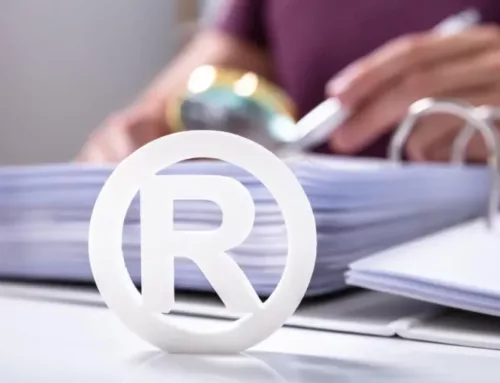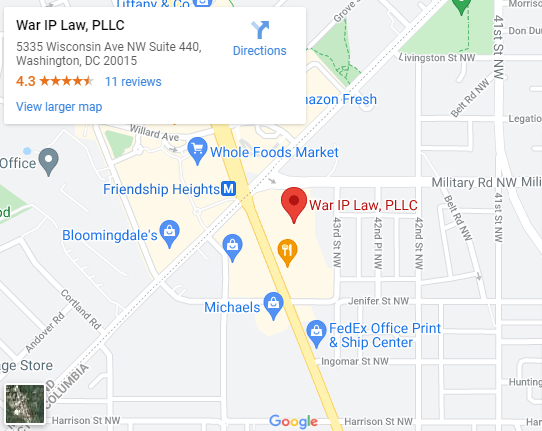
Finding the appropriate trademark classes can be a challenge. Accurately selecting the proper class can help ensure that the trademark remains protected. The United States Patent and Trademark Office (“USPTO”) oversees the registration of trademarks and divides its categories into 45 different classes: 34 for products and 11 for services. Those classes help the USPTO differentiate and track thousands of new trademarks each year. Many products fall under a few common trademark classes. If you need to trademark your products, you may want to speak with an experienced intellectual property attorney at War IP Law, PLLC, by calling (202) 800-3754 or visiting the website for a consultation.
What Are Trademark Classes?
When submitting a trademark application to the USPTO, the products are usually designated in a specific class of goods or services. The classes demonstrate how the company or individual will use the trademark in the marketplace. Many business owners trademark their products or services in multiple classes. For example, a business that sells purses and jewelry may file an application for Class 14 (precious metals) and Class 18 (leather goods). It can take time to determine the appropriate classes for a product or service. If the mark represents a new product or service, it can be difficult to categorize it.
Trademark classes allow businesses and individuals to search within a particular class. If the applicant wants to find out if another trademark exists, the USPTO has accessible information to do so. In addition to that, trademark classes also allow other trademark holders to co-exist, as long as they offer different products or goods. If you are interested in learning more about how to protect your intellectual property rights, please contact the experienced trademark attorneys at War IP Law, PLLC.
Common Trademark Classes
There are numerous trademark classes, but these are the common ones for most goods and services. Finding the appropriate classes for your products or services can be challenging. Choosing the wrong classification leads to rejection from the USPTO without any refund. With the high costs of trademarking these products, you should always research those trademark classes. For questions about intellectual property, you may want to reach out to War IP Law, PLLC, for a consultation.
The common trademark classes include:
Class 1: Chemicals
This class lists all the chemicals used in agriculture, horticultural, and forestry industries. They may include adhesive, food preservation chemicals, un-processed plastics, manures, extinguishing compositions, and tempering chemicals.
Class 9: Electrical and Scientific Apparatus
Various electrical and technological goods, including computers, software, smartphones, and mobile apps, make up Class 9. In some situations, fire extinguishers can fall into this class.
Class 10: Medical Instruments
Class 10 includes all surgical, medical, dental, and veterinary instruments and apparatuses. Trademarks may consist of artificial limbs, eyes, and teeth in this class.
Class 14: Jewelry Products
Precious metals, goods made with minerals, and products coated with precious metals and jewelry fall into Class 14. Trademarks can include horological and chronometric instruments in this classification.
Class 18: Leather Products
Leather products are part of this trademark class. Items in this class can include traveling bags, trunks, animal skins, walking sticks, harnesses, saddlery, and umbrellas.
Class 25: Clothing
Another common mark class is Class 25. While the primary products are clothing, other goods may include headgear and footwear.
Class 32: Non-Alcoholic Beverages and Beer
This class can include fruit drinks and syrup used to make beverages in addition to beer.
Class 35: Business and Advertising
Class 35 covers services rather than those physical goods. These services are associated with business management, including clerical services, public relations, human resource management, and advertising.
Class 42: Scientific and Computer
Almost all technical and scientific services fall into this class. The most common services include biological research, graphic design, clinical trials, and weather forecasting.
Classes 29, 30, 31, and 33: Foods
Most of these classes come under the general terms of “foods,” but they will differ from each other. Processed products like meats, edible fats, oils, jellies, and certain dairy products fall into Class 29. Sugars, coffees, spices, and flours are placed in Class 30. Fresh products, grains, and live animals are part of Class 31. Non-beer-based beverages, such as hard seltzer, wine, hard ciders, and liquors are in Class 33.
Class 36: Financial and Insurance Services
Companies and individuals can trademark financial services in this class, and it can include services such as financial planning, real estate affairs, and insurance.
Class 41: Education and Entertainment
While this class might seem specific, it can cover an extensive range of services, such as sports shows, art exhibitions, education, teaching, and training.
These are typical trademark classes. In some situations, businesses and individuals are unaware of the relevant classes, adding the wrong one to their applications. As a result, the trademark request faces rejection. By understanding these classes, the individual can successfully file for the proper trademark.
Selecting International Trademark Classes
Choosing the correct trademark class can be tedious. Always include classes for any services or goods that your company may offer or plan to offer in the future. However, avoid filling the trademark filing with too many classes. The USPTO requires proof that the individual or business sells all the services or goods in the trademark application. Keep in mind that trademark filing fees are based on the number of classes, meaning multiple classes can drive up the registration costs.
Consulting with an intellectual property law attorney may help with the application process to choose the best fit for specific services and goods. Goods and services may be categorized as “in use” or with an “intent to use.” After determining the right class, submit the application for the goods or services to the United States Patent and Trademark Office.
Contact an Intellectual Property Law Attorney Today
With these common trademark classes, you must find the best one to represent your services and goods. In many cases, you may have to file for more than one class to ensure that the trademark has the broadest protections under the law. Learn about your trademark class options by speaking with an intellectual property law attorney at the War IP Law, PLLC, at (202) 800-3754. Schedule a consultation today.






